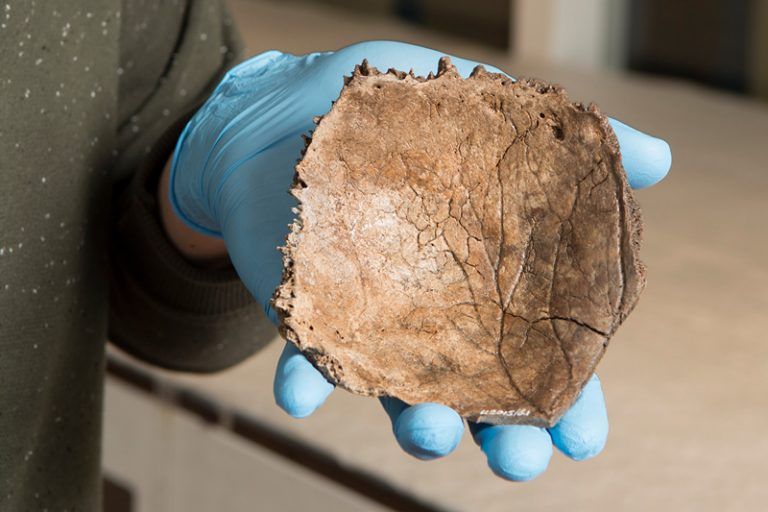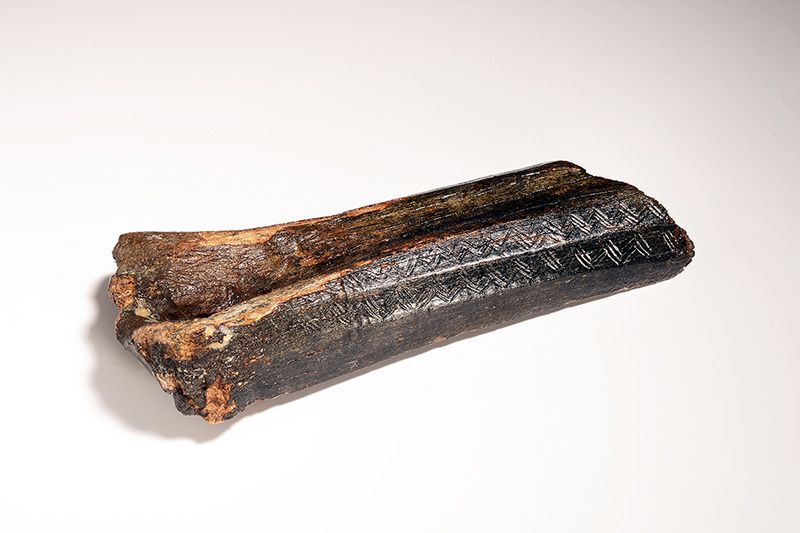Oldest human remains and oldest art from the North Sea
A fragment of a human skull from the collection of the Dutch National Museum of Antiquities and a decorated bison bone, both from the North Sea bed, are rare finds from the end of the last Ice Age. After studying the two finds, Dutch archaeologists have dated them to over 13,000 years old. This means that they constitute the earliest known human remains from the Netherlands and the oldest art discovered in the North Sea. During the Ice Age, what is now the North Sea was land – a large plain. This discovery therefore yields important clues concerning the colonisation and occupation of this vast sunken landscape and the early cultural expressions of the last hunters of the Ice Age.
Spectacular Ice Age discoveries from submerged prehistoric North Sea landscape
The ‘oldest Dutchman’ is a fragment of a left parietal bone of a skull dating back over 13,000 years. It is the oldest find of a modern human from the North Sea and was found by fishermen off the Dutch coast, south of the dredged navigation channel known as the Eurogeul. Physical anthropological research indicates that the fragment belonged to an adult human being, who may have suffered and recovered from a condition such as anaemia. The chemical composition of the bone confirms that hunting made an important contribution to the individual’s staple diet. The fragment was donated to the National Museum of Antiquities by the North Sea Fossils group in 2013.
Bison bone decorated with zigzag pattern
The decorated bison bone is slightly older – about 13,500 years old. It was retrieved from the North Sea, south of the Brown Bank. A private collector subsequently gave it to the National Museum of Antiquities on a long-term loan basis. The piece is a fragment of a metatarsal decorated with a striking zigzag pattern on five facets. It is the earliest piece of art to come from the North Sea. The object’s function remains unknown. It may have been the handle of a tool, or a ritual object. Three other artefacts with similar decorative patterns have been found in regions very far apart: Wales, France, and Poland.
Research
The finds were studied by a team of archaeologists from the National Museum of Antiquities, the Faculty of Archaeology of Leiden University, the Doggerland Research Group, the STONE Foundation and others. The C14 dates were analysed at Groningen University. The research was published in the scientific journal Antiquity.

The skull fragment from the North Sea.

Bone with oldest art from the North Sea.